Discover The Kate Show
The Kate Show

The Kate Show
Author: Socialite Agency
Subscribed: 74Played: 5,456Subscribe
Share
© Socialite Agency
Description
The Kate Show is a marketing podcast for interior designers, home stagers, professional organizers and window treatment specialists.
In every episode, Kate explains simple, no-nonsense ways to effectively market your business online. To learn more or read the show notes, go to www.katethesocialite.com.
268 Episodes
Reverse
In the competitive home industry, backlinks—links from other websites pointing to yours—are essential for boosting search visibility, local rankings, and E-E-A-T (Experience, Expertise, Authoritativeness, and Trustworthiness). Today on The Kate Show, I'm explaining why backlinks matter for interior designers, stagers, and organizers, how to audit your existing ones, and how to get more.🌟🌟 The Socialite App is coming in January 2026. Get your SEO and AIO-powered blogging done in minutes, not days, and start sending highly customized emails that take your word-of-mouth referrals to the next level.📌 Timestamps0:00 Introduction: Understanding Backlinks and Their Importance2:40 The Role of Backlinks in SEO and Local SEO 4:44 How to Audit and Manage Your Backlinks8:19 How to Get More High-Quality Backlinks for Your Website8:55 How to Give Backlinks to Other Websites 10:57 Creating Linkable (and Likeable) Content of Your Own12:42 Recap and FAQs
As you look at your end-of-year finances, you might realize that you need to cut expenses...or that you can finally invest in good marketing. I've compiled a short list of ways you COULD waste your money, if you wanted, as well as some of the most impactful marketing ideas I've seen since working in marketing for the design industry over the last decade.🌟🌟 The Socialite App is coming in January 2026. Get your SEO and AIO-powered blogging done in minutes, not days, and start sending highly customized emails that take your word-of-mouth referrals to the next level.📌 Timestamps:0:00 Introduction and Overview: 4 Marketing Must-Do’s for Interior Designers2:47 Rethink Your Social Media7:08 Rethink your Google Ads8:24 Email Marketing: One of the Best ROI of All Digital Marketing9:37 SEO and AIO: Real Ways to Get More Clients12:45 SEO & AIO: What Works for the Home Industry14:35 Essential 2026 Marketing Tasks: Website Optimization 17:56 Blogging: Quality Over Quantity 18:57 Email Marketing: Consistency and Relevance 21:24 The Socialite App: A Solution for Streamlined Marketing
Over the past year, I’ve watched the home industry shift dramatically—from economic uncertainty to Google’s core updates and the rise of AI search—and I know many interior designers are struggling to attract clients as a result. In this episode, I share how you can stay visible and relevant by reframing your existing services to match what clients need right now and by optimizing your website for both SEO and AIO (AI Optimization). By repositioning your offers, using client-focused language, and targeting the right service-and-location keywords, you can transform your website into a steady source of organic leads—without relying on expensive ads or outdated marketing tactics.Resources:👉 Download our marketing app to easily create blog and newsletter content on-the-go: www.socialitevault.com📌 Timestamps:0:00 Introduction: Interior Design Keywords for SEO + AIO Made Easy02:14 Addressing Client Fear 03:09 How to Reframing Your Services06:36 Good Keywords for Interior Design SEO (and AIO)09:20 How to Optimize a Webpage for a Specific Keyword12:52 FAQ: How Do I Find Keywords for My Interior Design Website?14:00 FAQ: How Do I Get Interior Design Clients When No One Is Reaching Out or When Leads Are Ghosting Me?14:21 FAQ: Do I Need to Change My Interior Design Services if I’m Not Getting Clients?15:00 FAQ: How Do I Get ChatGPT to Send Me Potential Interior Design Clients?15:26 FAQ: How Do I Know if My Website Is Optimized for Google and AI Search?
Sooo, I went to High Point Market because I got invited to speak on a panel. Most things didn't go according to plan, and I'm SO glad they didn't! Here's ACTUALLY what happened.Resources👉 Get the Socialite marketing app for your business: www.socialitevault.com📌 Timestamps 0:00 Introduction to the High Point Market Recap4:33 The Girl Boss Era and Its Impact8:44 Balancing Business and Family11:51 Integrating Business Into Family Life vs Seeking a Work-Life Balance14:10 The True Marker of Success23:42 Personal Reflections and Business Identity29:46 Post-Panel Reflections and Final Thoughts
Many interior designers and other home industry professionals are starting to get leads from ChatGPT, Gemini, and other AI search platforms. Today, I'm sharing how to capitalize on this shift and take charge of your own AI rankings. When you optimize your interior design website for AI search, you harness the power of future success online. Here's what you need to know...Resources👉 Get email marketing and blog posts for your business: www.socialitevault.com👉 Grab your plan for Marketing without Social Media: www.katethesocialite.com/marketing-plan-for-interior-designers📌 Timestamps0:00 Introduction: Optimizing Interior Design Websites for AI1:00 What is AIO (Artificial Intelligence Optimization)?02:04 Do Interior Designers Need AIO?02:30 What Is EEAT and How Does It Relate to My Website SEO /AIO?04:20 Website SEO Best Practices for AI Optimization 07:36 Detailed Service Page With Pricing10:17 Your Blog Posts AI Must-Haves11:40 How to Know if Your Site Ranks Well on ChatGPT and Other AI Platforms
After 11 years of marketing to interior designers, I'm finally going to High Point Market. Meet me on October 25th at 2 PM at "The Point" in the heart of Market. I'll be speaking on a panel moderated by LuAnn Nigara alongside business coach Andrea Liebross and interior designer / home stager Whitney Vrendenburg of Nested Spaces.This one-hour panel is your invitation to get out of your own head by thinking bigger and more unconventionally about your design or staging business. Each woman on this panel did something out-of-the-norm to get where she is today, me included, and this is your choice to join us in being wildly, confidently different in the way you run and scale your business.Join me at HPMKT25 on October 25th for a panel discussion about business growth, mindset, and marketing. Click here: www.highpointmarket.org/event_details_modal/7db93502-e5e4-4503-8897-c509fcea0274Resources👉 Get email marketing and blog posts for your design, organizing, staging, or window treatment business: www.socialitevault.com👉Grab your plan for Marketing without Social Media: www.katethesocialite.com/marketing-plan-for-interior-designersTimestamps0:00 Introduction & High Point Market Panel Announcement02:05 Reflections on Charlie Kirk's Assassination05:58 My Entrepreneurial Journey11:35 Mindset and Business Growth15:45 Introduction of Socialite Vault and AI Integration19:11 Personal Update: Maternity Leave and Family Life
Whether you're creating an email newsletter, a blog post, or writing verbiage for your website, you need to snag my simple formula. Those of you who are familiar with Donald Miller's Storybrand concept will find this to be a lighter, more digestible version of Storybrand that has been tailored to the home industry.In fact, the marketing trifecta I'm sharing with you today is the same formula we use when creating email newsletters, blog posts, and website copywriting for our clients.Resources🎯 Get email marketing and blog posts for your business: www.socialitevault.com🎯Grab your plan for Marketing without Social Media: www.katethesocialite.com/marketing-plan-for-interior-designersTimestamps:0:00 Introduction of the The Great Marketing Trifecta1:44 The Idea Section 4:48 The Evidence Section 5:46 The Action Section 7:05 Example Newsletter: Turn Your Spec Home into Your Forever Home 11:16 Website Copy Example: Luxury Home Organizing and Concierge Moving 16:42 Conclusion and Call to Action
Search engine optimization (SEO) for interior designers and related industries has remained a mystery for years. It has felt unapproachable due to how expensive it seems to be and the trust factor has remained fairly low due to a chronic lack of results. It's time to fix that!Today on The Kate Show, I'm sharing SEO fixes that any interior designer, home stager, or home organizer can go implement right now. Some of these fixes are faster and easier, while others will require some research and intentional effort. Resource:🎯 Get an SEO audit or makeover for your interior design, staging, window treatment, or organizing website: www.katethesocialite.com/seo-for-interior-designers Timestamps:0:00 Introduction and SEO Requirements for Website Pages 7:47 Keyword Research and Content Optimization 9:18 Frequently Asked Questions and Call to Action 11:24 SEO Best Practices and Common Mistakes 16:51 Keyword Monitoring and Ongoing SEO 20:04 Evaluating and Improving SEO 23:02 Final Thoughts and Recommendations
Is your website bringing you the right leads? Or any leads at all? If not, a lack of search engine optimization (SEO) could be to blame. Today, I'm walking you through our SEO transformation process. If you are hoping to DIY your SEO, you'll learn a lot from this episode. If you're trying to find someone you can trust who 1) knows SEO and 2) knows the design industry and 3) doesn't charge ongoing fees for silly things like "keyword monitoring," you're going to love this.Timestamps:0:00 Introduction to SEO Services for Interior Designers 2:25 Common SEO Issues in the Home Industry 8:02 How The Socialite Agency Transforms SEO for Interior Design Businesses9:55 The Actual SEO Workflow (7-Step Story Brand Framework)14:06 How to Optimize Website Elements 16:22 Tracking SEO Success (Recommended SEO Tools)
Does this story sound familiar? A homeowner contacted you and seemed like a great fit. You spoke to them on a Discovery Call, which led to a paid onsite consultation where you discussed budgets, timelines, and their needs and wants. Awesome! You went back to your office positively elated, put together the proposal, and sent it to them. And then...they ghosted you. They won't respond to your emails. They won't call you. A month later they might reach out - to say no to the project."It's not a good fit right now.""It's more than we wanted to spend."Or to quote the people-pleasers, "We might reach out again in a few months." (But will you, Karen? Really?)You are frustrated and discouraged. The proposal aligned with what they said they wanted to spend. What went wrong?Today on The Kate Show, I'm explaining why leads keep ghosting you and how to prevent it from happening again. Stream this episode on YouTube, Spotify, Apple Podcasts, or wherever you get your podcasts.Timestamps:0:00 Lead Ghosting: Understanding the Problem3:26 Improving Your Process and Marketing 6:13 Effective Proposal Presentations 8:29 Handling Bundle of Hours Projects 8:59 Setting Expiration Dates for Proposals 9:50 Increasing Perceived Value 11:48 How to Follow Up with Ghosting Leads 13:53 Email Script for Leads Actively Ghosting You17:37 Your Process & Marketing Strategy Going Forward
As an interior designer, window treatment professional, home stager, or professional organizer, you might not LOVE the sales process. You might cringe when your clients experience sticker shock over your very reasonable quote. You might wonder why they never reply to your proposals. Today's guest on the podcast will set you on a path to sales that doesn't feel gross - plus it actually works!About the GuestKathy Cragg Pace is a beacon of growth, empowering window treatment and design sales professionals to thrive by replacing outdated “closing” tactics with authentic connections and irresistible client experiences. With decades of experience—leading her own award-winning design franchise to nationwide sales teams, and influencing $450 million in sales—Kathy helps businesses reimagine their sales approach and address client hesitations with ease and confidence.Through her courses, tools, and coaching, Kathy guarantees results and shares free resources at KathyPace.com. Let her 7-Day Sales Challenge guide you to a thriving future in design sales.Resources:Kathy Pace Website: https://kathypace.com7-Day Sales Challenge: https://kathypace.com/kateTopics DiscussedDoes being salesly and relying on elevator pitches ever actually work? Might be a trick question... ;)What does old fashioned sales look like for the home industry and what parts of it don't work?What does modern sales look like and what are its key differences from the old ways of selling?What is your advice to a home pro who HATES selling but needs to make a profit?What is a Signature Selling Experience? How does it incorporate the Unique Selling Proposition (USP)?Could you describe how an interior designer or workroom owner could implement this in a real life selling situation? (Feel free to share any client success stories!)What type of home pro is a good fit for what you teach?Where can home pros learn more about what you teach?Timestamps:0:00 Introduction and Guest Overview2:47 Kathy Pace's Unique Sales Approach 7:13 Old-Fashioned Sales Methods vs. Modern Approaches 9:50 The Importance of Personalized Client Experiences 21:58 Selling Transformations Rather Than Products 28:41 Handling Resistant Spouses and Money Conversations 41:49 Kathy Pace's Resources and Courses 48:38 Final Thoughts
Remember this: If someone is offering website design but not SEO (which always includes copywriting, because where else would those keywords come from?), the end result is not a complete website.If this describes you, don’t freak out. Here’s a quick way to know whether your website has proper onsite SEO that will help you be found in Google.What is SEO? Search engine optimization, or SEO, determines how highly ranked your website is in search results. It’s a combination of copywriting / keywords, loading speed, and user experience.Copywriting for SEO: Your headlines should contain keywords that are specific to your services, location, and / or ideal client. Most headlines are too vague, which is a shame, because that is the first thing Google and humans will read. Also, copywriting must first and foremost highlight your ideal client and their pain points, then provide a solution (your services). This is a great way to naturally use the right keywords in your body text.Images for SEO: Every image on your website should be compressed to around 500 kb or less. Each image file name should be changed to contain the service provided, the location of the project, and the type of project. For example, a file name could be “interior designer Charleston modern white navy kitchen remodel.”User experience for SEO: Basically, this refers to the design of your site. Your home page should contain these key 11 elements. Your about page should include your first-person bio. Testimonials should be sprinkled throughout the site. Your services page should list no more than three offerings.What about Google Ads? Long story short, your website SHOULD be bringing you clients without relying on paid ads. If you have a great site and good SEO but still no leads, you still have options to help fix that organically.“Uh oh, I don’t think my last website was designed with SEO in mind…”Timestamps:0:00 The Issue of Luxury Branding Experts Advising Against Copywriting and SEO3:04 Basics of SEO and Copywriting 6:14 Images and User Experience for SEO 7:21 Google Ads and Organic Traffic 10:49 Client Email on Conflicting Advice About the Importance of Copywriting and SEO20:08 SEO Stats and Best Practices 23:48 Effectiveness of Email Marketing 25:43 Challenges with Luxury Branding Experts 26:32 Final Thoughts
Getting more of the right clients for your interior design firm doesn't happen by accident, nor does it happen overnight. Today on The Kate Show Podcast, I'm talking with Porsche Williams of The Prototype, and she's spilling all the secrets on lead generation for luxury interior designers. About the GuestPorsche Williams is the CEO of The Prototype, a business concierge firm specializing in client experience and lead generation for interior designers. Passionate about streamlining business growth, she helps designers attract ideal clients, nurture relationships, and scale confidently while staying focused on their creative vision.Through The Prototype’s expertise in client experience and lead qualification, Porsche ensures that designers can design freely and manage effortlessly, allowing creativity and operations to work hand in hand. Since 2020, her team has supported luxury interior design and architecture firms across the U.S., Canada, and Australia and partnered with IDS, ASID, Business of Home, MyDoma by Studio Designer, and more.Now, she’s bringing her expertise to The Designer’s Guide to Reliable Lead Generation, a course designed to help designers build a scalable, stress-free lead generation system while strengthening relationships and driving long-term growth.Porsche is a wife, a mom of two, and a champion of helping designers run their business, their way—without the overwhelm.Learn more about her online course for interior designers here: The Designer’s Guide to Reliable Lead Generation https://www.theprototype.net/tdgTopics Discussed:What are the most common issues that prevent interior design firms from growing? A lack of clients is more of a symptom. What are the actual underlying problems?If a designer is just starting to get her systems in place, what should her first few steps be?What specific online automation or management tools do you recommend for designers?When your team handles discovery calls for interior designers, what information does the designer need to give you ahead of time?Because you are doing the discovery calls, at what point (and how) is the designer brought into the new client relationship?Could you give us a general outline of the ideal lead follow-up process?How does your firm help designers connect with referral partners?Tell us about your course: Who is it for, and what will they gain from it?Tell us how people can buy your course or get on the waiting list.Timestamps:(0:00) Introduction and Guest Overview (2:47) Common Issues Preventing Interior Design Firm Growth (5:46) First Few Steps a Designer Should Make to Get Her Systems in Place(9:39) Time Management and Estimating Time (13:06) Tools & Systems: Project Management, Auditing, Organization, CRM (28:04) General Outline of the Ideal Lead Follow-Up Process(33:17) Building and Maintaining Referral Relationships (44:29) The Designer's Guide to Reliable Lead Generation Course (50:16) Final Thoughts
If you were hoping for an episode that tells you exactly how much you should be charging for your design, staging, or organizing services... This isn't it. It's next level. Once you've worked out your pricing with your business advisor, bookkeeper, or someone else who understands your business financials as well - if not better - than you do, the next step is to select a pricing strategy, not merely set a price and call it a day.However, did you know that juxtaposing multiple pricing packages can make one package look better than the other - but it's often causing you to sell something you don't want more of?For example, did you know that charging a flat rate versus an hourly rate has a certain stigma attached to it? And did you know that you can influence whether people will feel delight at your proposal or utter sticker shock and betrayal just by the pricing strategy you choose?The right pricing strategy removes the pressure to offer a "better deal" than your competitors because you are instead able to position yourself as the BETTER FIT for your ideal clients - a total boss move. Let's dive into it.Stream The Kate Show Podcast wherever you get your podcasts, and watch on Spotify or YouTube.Resources You'll LoveWhy I deleted my business social media: https://www.katethesocialite.com/just-kateGet a marketing plan for your home industry business: https://www.katethesocialite.com/marketing-calendarGet a complimentary 1:1 marketing audit LIVE with Kate: https://calendly.com/socialite/socialite-vault-inquiryTimestamps:(0:00) Pricing Strategy Introduction and Overview (2:26) Defining Pricing Strategy (4:28) Bad Pricing Strategies (13:09) Good Pricing Strategies (22:19) Pricing Strategies for Service-Based Businesses (25:51) Delivering Proposals Effectively (28:14) Final Thoughts on Pricing Strategies
As an interior designer, stager, organizer, or window pro, you have an ideal client, and you likely know who that person is. The problem I often see, however, is that your marketing rarely states point-blank who that person is, nor are you services being presented as a solution that is truly tailored to THEM. This means that no matter how clearly you know your ideal client, they don't know you, and therefore they won't understand why they should hire you versus your competitor.Today on The Kate Show, we are going beyond discovering your ideal client and diving into the SIMPLE WAY TO SPEAK DIRECTLY TO THEM so that you can actually start working on their projects.Stream The Kate Show on Youtube, Spotify, or wherever you get your podcasts. Leave a rating and review if this show has helped you.Resources You'll LoveWhy I deleted my business social media: https://www.katethesocialite.com/just-kateGet a marketing plan for your home industry business: https://www.katethesocialite.com/marketing-calendarGet a complimentary 1:1 marketing audit LIVE with Kate: https://calendly.com/socialite/socialite-vault-inquiryTimestamps:(0:00) Introduction(2:14) The Role of Copywriting in Marketing (3:39) Website Optimization for Ideal Clients (10:21) How to Improve Website Content and Structure (13:23) Components of a Clear and Relatable About Page(14:45) Portfolio Page Optimization (15:56) Services Page Optimization (25:44) Contact Page and Lead Qualification (28:20) Blog and Lead Magnet Best Practices (31:57) Email Marketing for Effective Client Engagement
Having worked with so many home industry businesses over the last decade, I often see the same problem at the root of all struggling interior designers, stagers, organizers, etc. THEY HAVE NO CLEAR NICHE.Some are resistant, fearing they'll lose business (even though they barely have any to lose) if they narrow down their focus. Others would LOVE to have a niche but don't know where to start or what having a niche even means.Today on The Kate Show Podcast, I'm sharing a few client stories to show you what is possible when you create a specialty around your brand, and how to make it happen.Resources You'll LoveWhy I deleted my business social media: https://www.katethesocialite.com/just-kateGet a marketing plan for your home industry business: https://www.katethesocialite.com/marketing-calendarGet a complimentary 1:1 marketing audit LIVE with Kate: https://calendly.com/socialite/socialite-vault-inquiryTimestamps:(0:00) Episode Introduction and Purpose(1:18) Client Story: A Case of Hidden Identity (7:24) Client Story: A Case of Mistaken Identity (11:13) Takeaway: Clear Communication and Repositioning the Specialty(14:20) The Role of Objective Feedback (15:53) Importance of a Niche or a Clearly Defined Specialty
I started 2025 knowing that a few things needed to end in my business (even though innovation and invention are SOOO intoxicating!). Instead, I had a feeling that God was calling me to shut down several things. At the time, I wasn't sure why, but it has become clear that He intended to trim wasted time and effort from the agency, while increasing the value of client relationships. Pretty genius stuff, actually.Today on the podcast, I'm sharing the impact that deleting social media is having on my business.In place of social media, I created a non-business mailing list entitled "Just Kate," where I connect with my email subscribers in a much more personal way once or twice per month. If you'd like to join that list, go to www.katethesocialite.com/just-kate. You can expect things like silly stories about my kids, photos of my family, my politically incorrect rants, what I'm currently struggling with (it's always something), life hacks that I've only just learned (because apparently I've been living under a rock), and of course, pregnancy / baby updates. Basically, it's girl talk in your inbox. Go to www.katethesocialite.com/just-kate to get on the list.Resources You'll LoveGet a marketing plan for your home industry business: https://www.katethesocialite.com/marketing-calendarGet a complimentary 1:1 marketing audit LIVE with Kate: https://calendly.com/socialite/socialite-vault-inquiryTimestamps:(0:00) Why I Deleted My Business Social Media(3:11) Impact of Social Media on Business (9:03) Changes in Business Strategy (12:00) Marketing Masterminds and Client Interaction (15:03) Advice for Cutting the Fat from Businesses (21:39) Consistent Email Marketing and Evergreen Content (23:27) Building Non-Professional Relationships
How do you know if your lead magnet is working? Should you change your lead magnet? What is the best lead magnet to have if you run a business in the high end, residential home industry? Today on The Kate Show, I'm giving you the exact answers.Resources You'll LoveWhy I'm deleting my business social media: https://www.katethesocialite.com/just-kateGet a marketing plan for your home industry business: https://www.katethesocialite.com/marketing-calendarGet a complimentary 1:1 marketing audit LIVE with Kate: https://calendly.com/socialite/socialite-vault-inquiryTimestamps:(0:00) Common Questions About the Effectiveness of Lead Magnets(01:13) Signs Your Lead Magnet Isn't (or won't be) Successful(06:26) Effective Lead Magnet Formats (08:22) Effective Lead Magnet Topics(10:03) Setting Up and Promoting Lead Magnets (13:57) Signs of Lead Magnet Success(15:13) Email Marketing Best Practices (18:34) Conclusion and Final Tips
It isn't often that I'm confronted with marketing advice that is just SO wrong that it's hilarious. And I am immediately sobered by the fact that I have seen my own clients' businesses harmed by following such advice."I was paying this coach thousands of dollars, so I thought she knew what she was talking about," is a statement my returning clients have made a little too often.Let me be clear, business coaches are not marketing professionals. And marketing pros are NOT business coaches. I've been asked to provide coaching numerous times. I will always continue to say no.Why? Because merely running one or two successful businesses doesn't qualify me - or anyone else - to be a coach. And being a business or branding coach doesn't mean they know anything about marketing.This topic is pretty personal to me. I've read too many sad emails from my clients who were given advice that resulted in one of their worst, least profitable years in business.Harmful advice such as..."Stop blogging and email marketing. That is just for newbies." (No one is above marketing or consistent client communication.)"You need to sound more elevated." (No, you just need to align with your ICA better, be personable, and talk to them consistently. See the first point.)"Rebranding would solve your revenue problems." (This is a bandaid approach that costs YOU time and money without addressing the actual financial problem.)Resources You'll Love👉 Why I'm deleting my business social media: https://www.katethesocialite.com/just-kate👉 Get a marketing plan for your home industry business: https://www.katethesocialite.com/marketing-calendar👉 Get a complimentary 1:1 marketing audit LIVE with Kate: https://calendly.com/socialite/socialite-vault-inquiryTimestamps:(0:00) Introduction: Laughable Marketing Tips and Their Impact(4:01) Marketing Tips That Will Keep You Pointed in the Wrong Direction(18:20) Marketing Mindset and Positioning(23:15) 4 Principles of Building Brand Trust
As the owner of an interior design, staging, organizing, or window treatment business, you've likely had a few thoughts about your SEO. You might have even hired someone to work on it. But what if you haven't been getting increased website traffic after months of paying for that work? Or what if you WERE getting traffic and it suddenly dropped off the face of the earth?If that describes your situation, your website might be using black hat SEO, and as the owner of the business, you need to get that fixed as soon as possible. Today on The Kate Show, I'm sharing the difference between black hat and white hat SEO, the dangers of using black hat tactics, and how to know if those tactics were used on your website. Plus, I'll share what you can do to fix or improve your SEO the right way going forward.Stream this episode wherever you get your podcasts or watch it on YouTube and Spotify.Resources You'll Love Why I'm deleting my business social media: https://www.katethesocialite.com/just-kate Get a marketing plan for your home industry business: https://www.katethesocialite.com/marketing-calendar Get a complimentary 1:1 marketing audit LIVE with Kate: https://calendly.com/socialite/socialite-vault-inquiryTimestamps:(0:00) Introduction to Black Hat vs. White Hat SEO(5:00) The Basics of SEO and Its Importance (8:07) What Is Black Hat SEO and Its Examples Tactics(14:16) What Is White Hat SEO and Ethical Practices (16:49) How to Fix Your SEO and Use White Hat Tactics Exclusively(19:38) Warnings and Final Advice



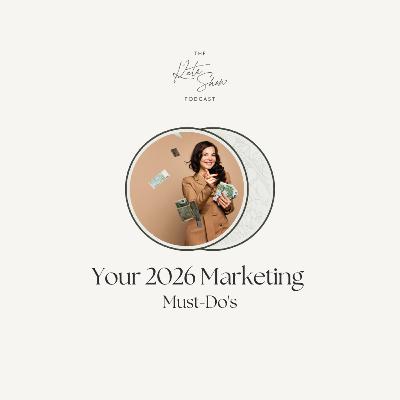



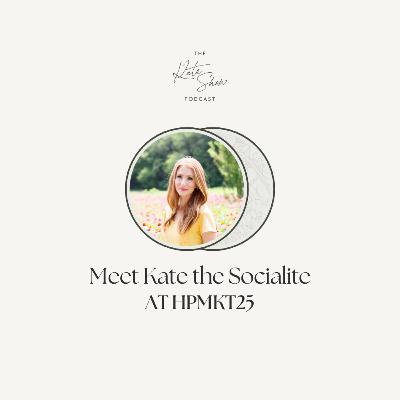
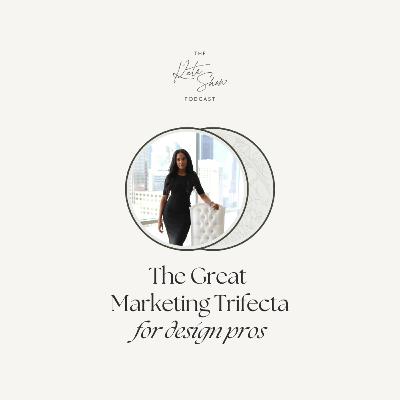
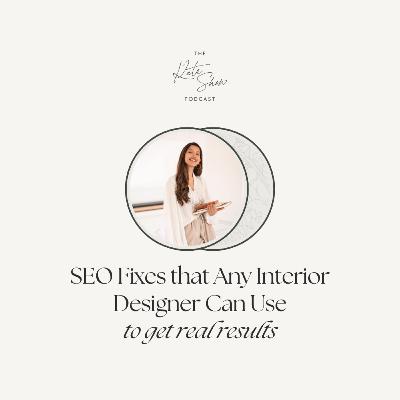
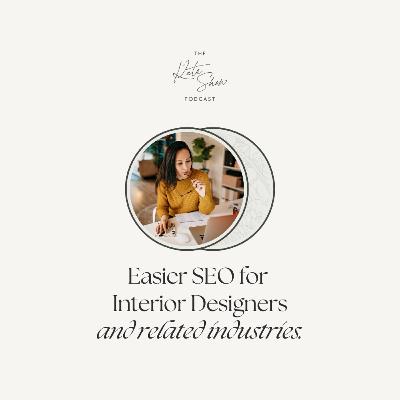
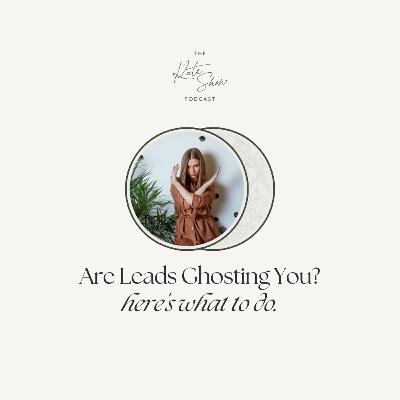
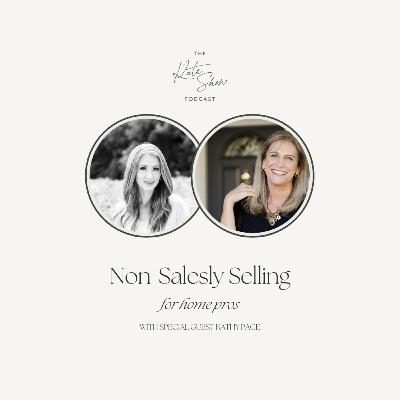
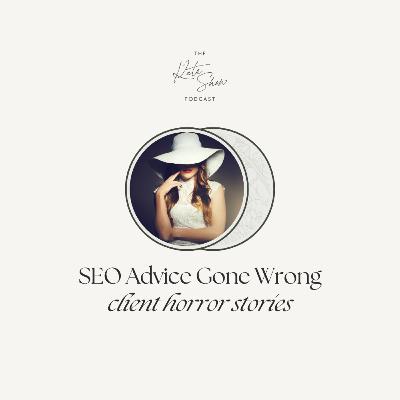

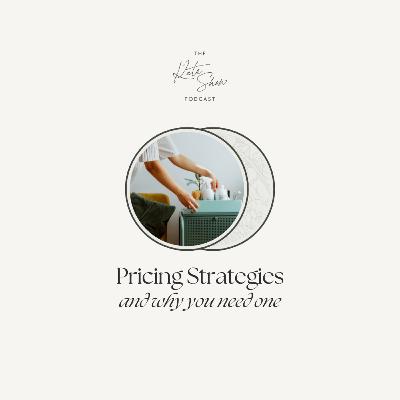
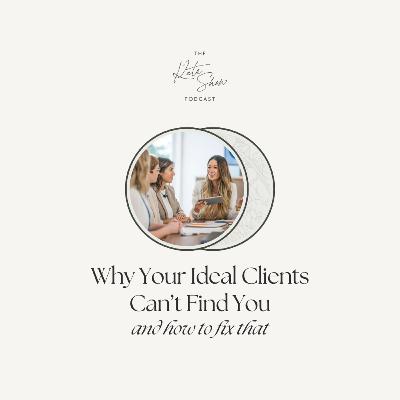
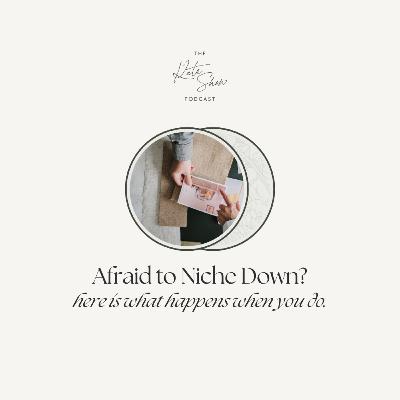
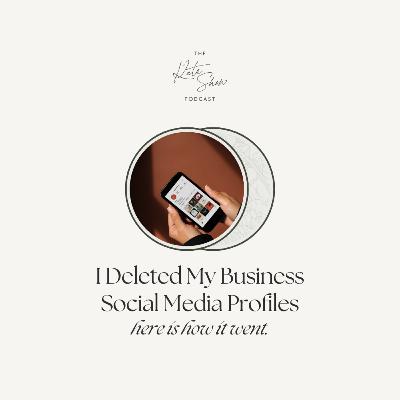
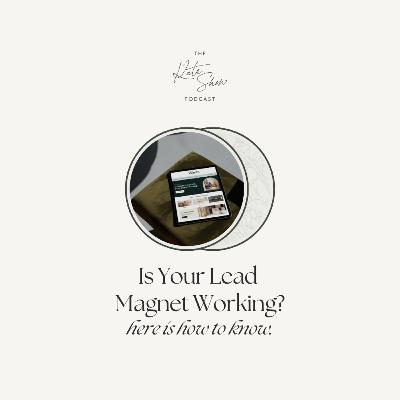
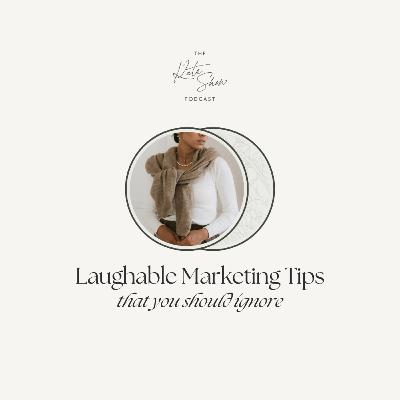
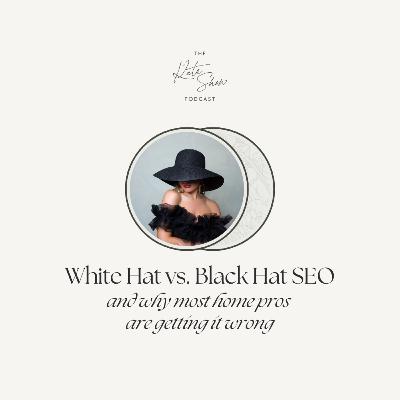



Loved the content!! So useful. But it’s like there was another recording with a male voice underneath.
Thank you Kate 🙏🏾. I will be listening to this episode more than once for sure. I love how unashamed you are about where our value and worth truly comes from.